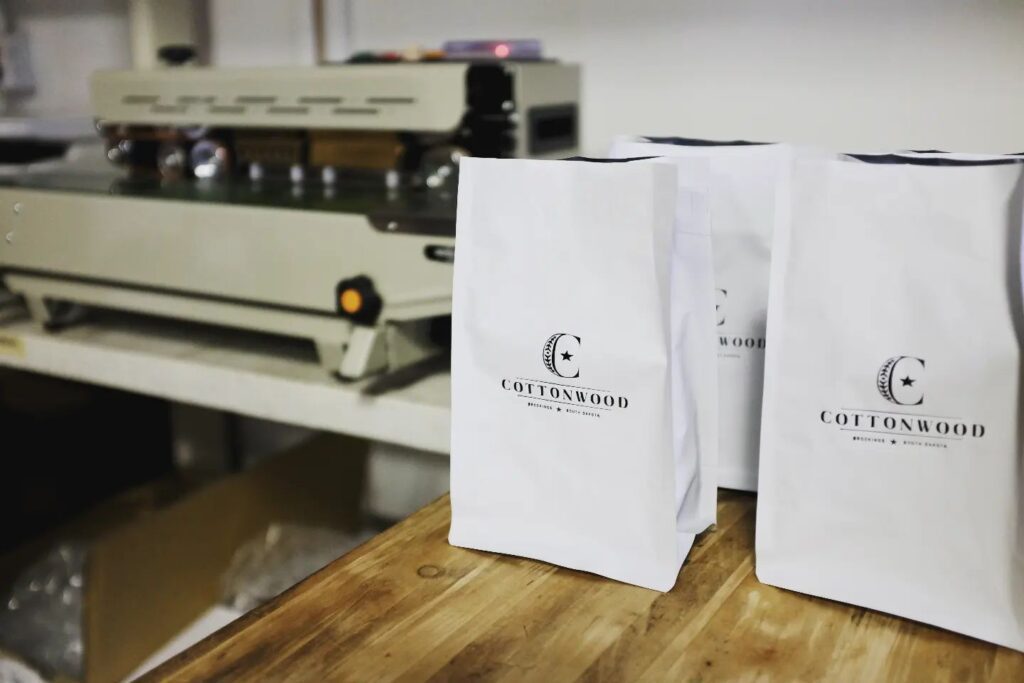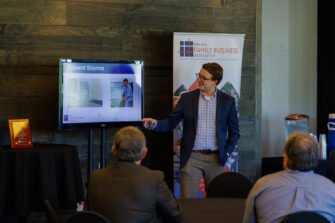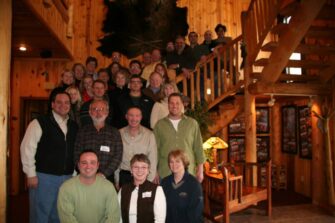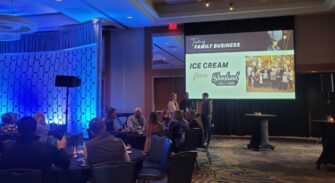Recent News
Mike Michalowicz has definitely lived the ups and downs of business.
By his 35th birthday, he founded and sold two multimillion-dollar companies. Confident he had identified the formula for success, he became a small-business angel investor – and proceeded to lose his entire fortune.
Then, he started all over again, driven to find better ways to grow sustainable and profitable businesses. In the process, he researched, developed and innovated impactful entrepreneurial strategies that have been used by thousands of companies globally to drive profit and growth.
Michalowicz will be the keynote speaker at the 2022 Prairie Family Business Association annual conference April 28-29 in Sioux Falls, which will be held in person and virtually.
“We are very excited to bring Mike Michalowicz to our 30th Annual Family Business Conference,” said Stephanie Larscheid, executive director of the Prairie Family Business Association. “Our advisory board suggested Mike as a keynote, and he’ll kick off our second day with a lot of energy and business insights. Our mission is to help family businesses thrive through generations, and Mike’s business lessons align well with our mission. Mike is known for engaging with his audiences while learning their stories that often lead to his future book ideas.”
The keynote will end with a Q&A featuring business owners who will have five minutes each to ask Michalowicz their most pressing question. He’ll solve these business issues in real time in front of the audience.
Jacob Limmer, owner of Cottonwood Coffee in Brookings, already has experienced the effect that Michalowicz can have on a business. They met a few years ago when Michalowicz was doing research for a book and have stayed in touch.
For Cottonwood, which began as a coffee shop in downtown Brookings, added a second location and expanded to focus on wholesale coffee roasting, the insight has been invaluable, Limmer said.

“Mike is extremely gifted at understanding the fundamental issues facing a business or business owner. He gives advice that cuts through the noise and feels very achievable,” he said.
“His book ‘Fix This Next,’ really exemplifies that talent. It looks at the business as a whole and helps the owner determine what the best next project would be. Working with Mike directly really helped me clarify what the best next priorities were for Cottonwood. I think as business owners, it is easy to get trapped in a cycle of ‘being busy,’ when that isn’t the best use of our time and resources. That clarity is what Mike helped me with the most. He has really set me on the trajectory for success, as cliche as that sounds.”
We caught up with Michalowicz for some initial insight and a preview of his keynote speech.
Your work is applicable for any business leader, but you’ll be speaking in Sioux Falls to an audience of family businesses. What kind of themes will you be sharing with them?
First, I want to say thank you for having me. It’s an honor to share knowledge to ensure the health and sustainable success of family business – they’re one of the core backbones of the business world.
Second, I want to recognize that multigenerational businesses are extremely nuanced. They differ from traditional corporations in that they’re built on the values, relationships and legacy of generations before them. I would assume there is more pressure to succeed not only for the sake of the actual business but also those who went before you. There’s a sense of honoring them. At the same time, you can’t navigate that journey the same way as when the business began 100, 50, 20 or even five years ago.
Particularly during times of transition from one generation to another, some aspects of the business, including developing new marketing strategies, may get put on hold. I’m going to help family businesses cut through the static and get the attention they need to immediately convert prospects into clients. At this event, I’ll share my experience – OK, first failures – marketing research and methods I developed to get family businesses noticed in a millisecond. I’ll teach core principals of my latest book, “Get Different,” providing ways to differentiate, attract and direct your prospects. By the time you leave, you’ll have an action plan to transform potential customers into lifelong customers.
Business leaders might know you best from one of your earlier works, “Profit First,” which has been adapted by many businesses and essentially flips the idea that profit is generated once expenses are removed from sales. You show that by establishing profit first and using what remains for expenses, businesses can transform themselves financially. Do you feel like this is uniquely applicable given all the current variables in business today? Does it still have the same relevance?
“Profit First” does not have the same relevance today as when it was first released. “Profit First” has more relevance, particularly in these uncertain times. I have received hundreds of emails over the last two years from business owners who expressed that had it not been for following the Profit First methodology, their businesses would never have survived the crisis created by the pandemic. At first for some, Profit First is a scary construct to think about. Business owners are conditioned to throw money at problems that arise in our businesses and then scramble to make more sales to get more cash. Profit First, if followed correctly, will sustain a business through a crisis, create a solid accounting and money management system and ensure healthy profitability going forward.
Your 2020 release, “Fix This Next,” details the strategy businesses can use to determine what needs fixing in a business, and in what order, to ensure healthy, fast, permanent growth and avoid debilitating distractions. What were your biggest takeaways from researching and writing this?
One of the biggest challenges business owners face is not knowing what their actual challenges in their business are. In “Fix This Next,” I created The Business Hierarchy of Needs, which outlines five basic needs for all businesses. It begins with sales, then profit, order, impact and, finally, legacy.
Having a visual for those levels makes the big picture of your business come together. You see how one level is dependent on the other and that you cannot build anything unless your foundation is absolutely rock solid. This isn’t to say you won’t have to reevaluate these levels during the life of your business because, as we have seen, the world is changing, and we must change with it. Only now, you have a system to fix whatever requires adjustments to ensure the efficiency and stability of your business.
You are a prolific author, speaker and researcher, so what topics are of interest to you now? What are you currently digging into and why?
Every book, speaking engagement and research experience is a major growth opportunity for me, and I use those to serve other entrepreneurs and business owners. It seems each book brings me to the next idea for the next one and so on.
Over the years, I’ve noticed that the true success of a business isn’t solely based on sales, profit or efficiency. What every single business requires is steadfast leadership, no matter what size the business is. And, old-school leadership does not cut it anymore. It bears repeating: Traditional leadership will not work going forward and can tank even the strongest of companies.
A lot of older leadership tactics create intimidation rather than dedication, and no one performs well if they feel their livelihood is on the line with every task they complete or not.
In light of this, I have started an outline for a book for leadership transformation. That transformation will also transform sales, profit and every aspect of your business. Today’s leaders need to remember that they are leading employees who are humans with families and outside commitments, not numbers, and they themselves as leaders need to be human as well. I have tested out different leadership styles in my own companies, and I have never seen more success than I have in my recent leadership style of considering my employees and their needs just as much as I do the needs of my business.
My latest adaptation of a more “human” approach to leadership has created incredibly loyal, dedicated and efficient employees. Being more human may sound a little “soft” to some, but my company has proven that we are one happy, well-oiled machine. There is mutual respect, camaraderie, accountability and high-level efficiency. And, we feel like a family. As a strong, thoughtful leader, I have realigned my company goals to those of my employees. Say someone is saving for a house and needs a certain amount of money. That personal goal gets plugged into our business goal. We look for ways to create more revenue, for a larger bonus or more hours for that employee. Even on an emotional level – if someone is struggling, we take the time to listen, to help them or find resources that can. In return, my employees don’t just come in to punch a clock and get paid. They work in and outside their job description as a team, sharing responsibilities and pitching in where they can. We’ve created a nurturing environment where people cannot wait to come to work, and I can’t wait to share these leadership strategies so other businesses experience this powerful transformation as well.
What are some of the takeaways you hope attendees at the Prairie Family Business conference bring home after hearing you speak?
By following The DAD Method, I have seen companies increase their lead flow within a month.
I want family business owners to take home a marketing action plan that will help them succeed now and in the future. Participants will learn how the revitalization of their marketing through the implementation of The DAD Method in turn revitalizes their business and showcases their offering and mission in a way that cannot be duplicated or ignored.
We will discuss the neuroscience behind marketing and The DAD Method I created in order to work with their prospects’ intuition. The DAD Method consists of:
- Differentiate: Do different to get noticed – and engage prospects in a millisecond.
- Attract: In a way that attracts your ideal prospects.
- Direct: Direct prospects to take action – compel them to take the action you want to convert them from your prospect to your customer.
Are there any challenges or strategies you’ve addressed in your writing and research that might be uniquely applicable to family businesses?
The need for legacy. In “Fix This Next,” I discuss the legacy level at length, and I think the need for a strong legacy in a family business carries way more weight than nonfamily-owned businesses. Sure, we all want to leave a legacy, but in a multigenerational business, you are perpetuating the legacy of your ancestors. That’s pretty powerful stuff! There is a level of emotion and commitment you won’t get anywhere else. I know these qualities make family-owned businesses shine among the sea of competitors, and it’s something I love to witness.
Every business owner is a steward of their business, of their legacy, but this fact holds true even more for family businesses because you can see the line of succession and you want to uphold the legacy for those who paved your path and for those who will follow yours.
The world is starving for the success of multigenerational businesses. Never stop learning, reevaluating and growing your business to serve others. It’s truly what you were made to do.
Click here to connect with the Prairie Family Business Association’s 2022 conference.




